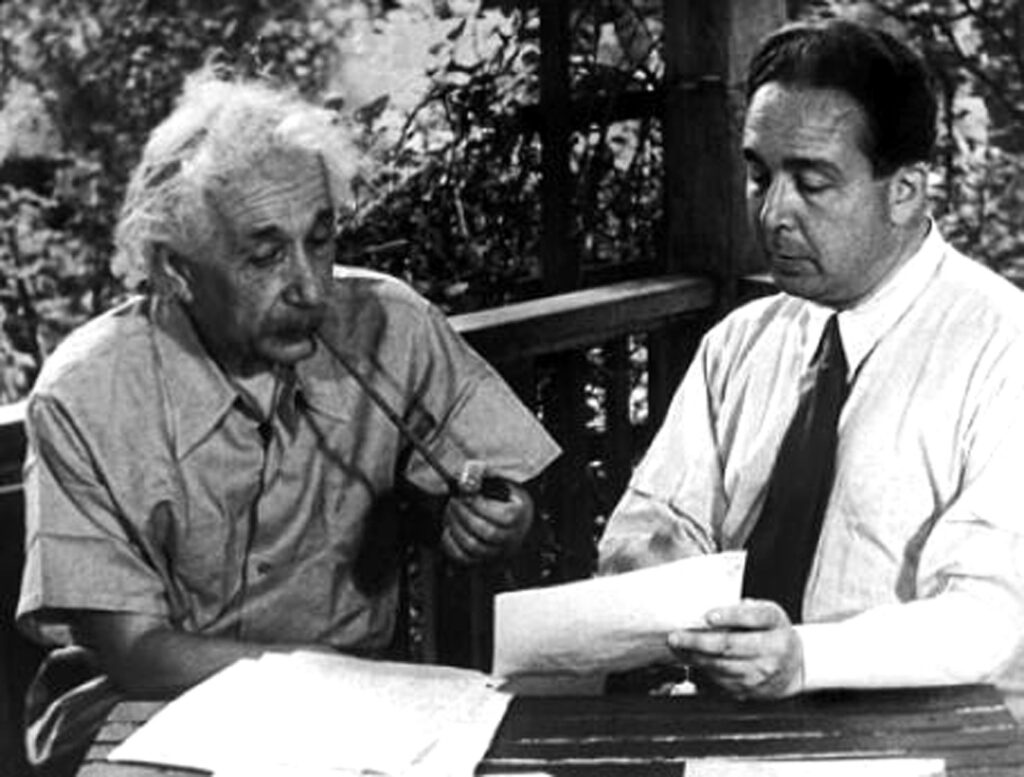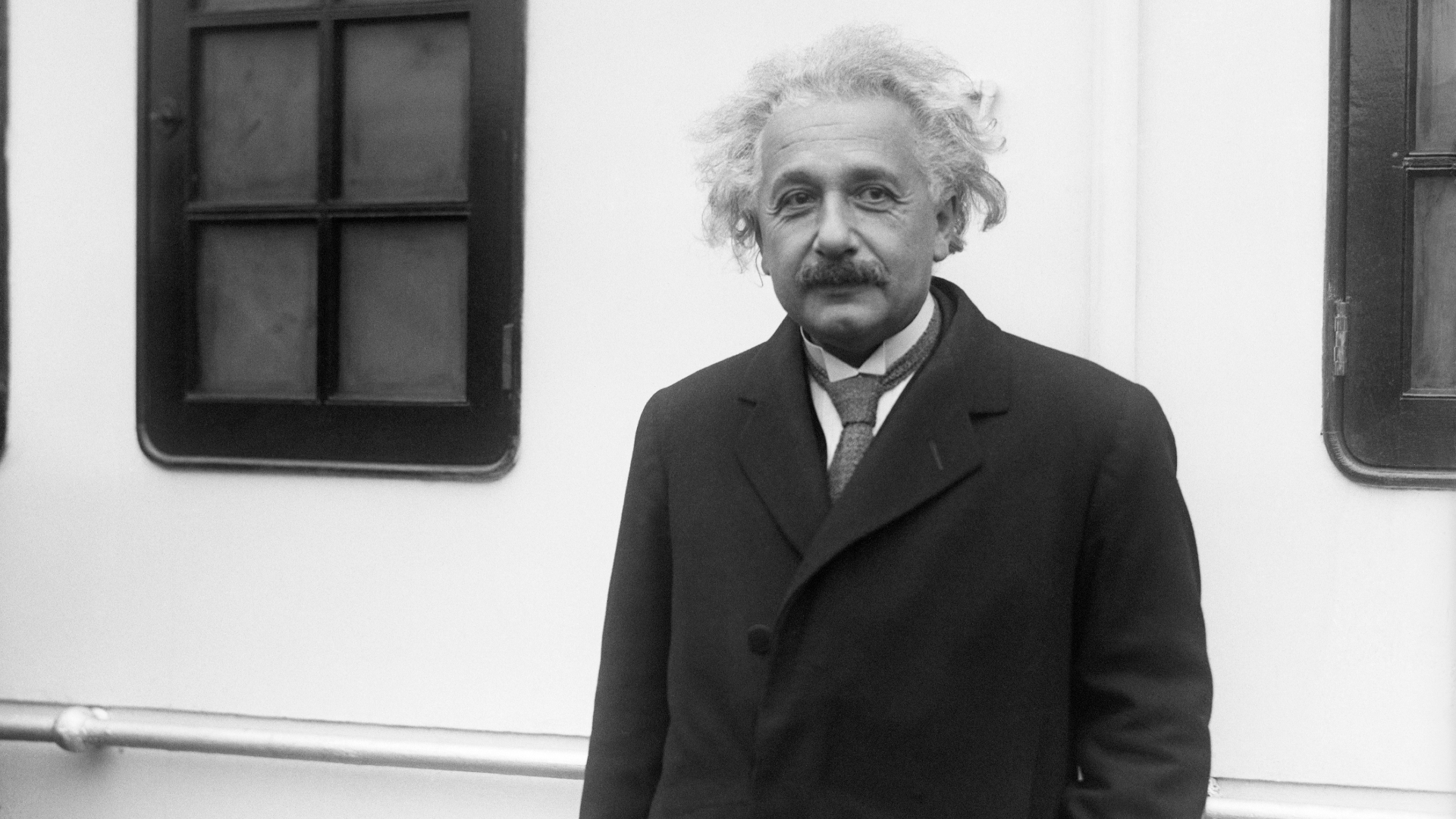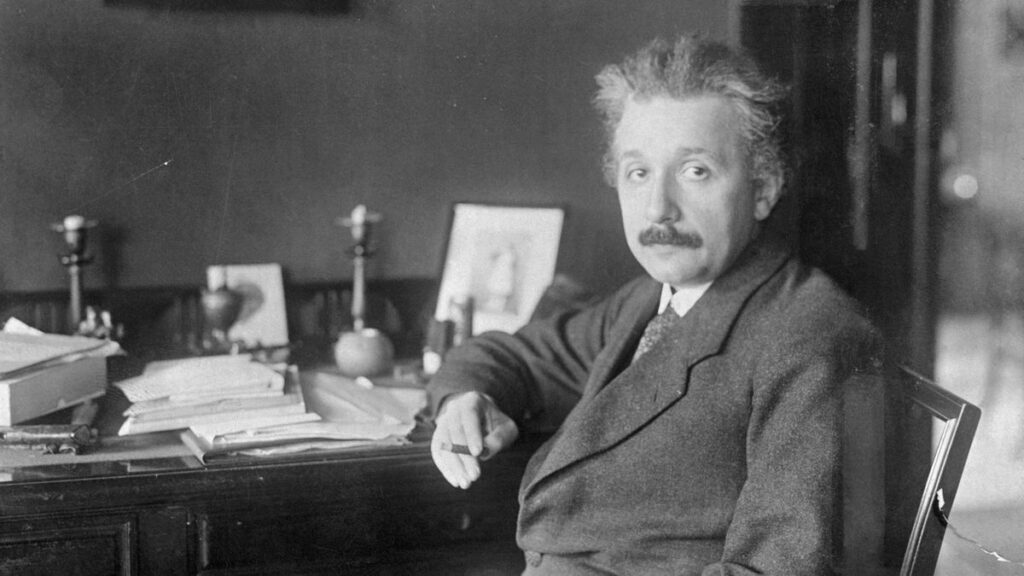Table of Contents
A Humble Beginning (1879-1896)
Albert Einstein was born on March 14, 1879, in Ulm, Germany, to a secular Jewish family. His father, Hermann Einstein, was an engineer and businessman, while his mother, Pauline Koch, encouraged his love for music, particularly the violin. From an early age, Albert Einstein exhibited a deep curiosity about science and mathematics, often questioning how the universe worked. However, some teachers saw him as unremarkable due to his independent learning style and refusal to conform to rigid instruction. A popular myth suggests he struggled with mathematics, but in reality, he mastered calculus by the age of 15. That same year, he left school in Munich and moved to Switzerland, seeking a more open-minded educational system.
In Switzerland, Albert Einstein pursued higher education, enrolling at the Swiss Federal Polytechnic in Zurich in 1896. This transition proved crucial, as it introduced him to a progressive academic environment that encouraged critical thinking and independent problem-solving. He focused on physics and mathematics, fields that would later become the foundation of his revolutionary discoveries. Unlike many of his peers, he relied heavily on thought experiments, visualizing complex scientific ideas instead of conducting traditional lab experiments. This imaginative approach allowed him to question established theories and develop new insights into the nature of time, space, and energy. His formative years in Zurich played a significant role in shaping his scientific mindset, ultimately leading to his groundbreaking work in theoretical physics.
University Years and Early Struggles (1896-1902)
Albert Einstein began studying physics and mathematics at the Swiss Federal Polytechnic School in Zurich in 1896. He was highly intelligent but often clashed with professors due to his unconventional thinking. Despite excelling in theoretical work, he struggled with the rigid structure of academia. After graduating in 1900, he found it difficult to secure a university position, partly because he lacked strong recommendations. To support himself, he tutored students but disliked the work. His search for an academic job remained unsuccessful, forcing him to look elsewhere. In 1902, he accepted a position as a technical examiner at the Swiss Patent Office in Bern. Though seemingly unrelated to physics, this job gave him the financial stability and intellectual freedom.
Working at the patent office proved unexpectedly beneficial for Albert Einstein, as it gave him time to contemplate deep scientific questions without the constraints of academia. His role involved reviewing inventions, which exposed him to emerging technologies and sharpened his analytical thinking. While working full-time, he continued researching physics in his spare hours, developing foundational ideas that would later redefine scientific thought. It was during this period that he formulated groundbreaking concepts about the nature of light, space, and time. This intellectual freedom allowed him to refine his ideas, leading directly to the four revolutionary papers he published in 1905.
The Miracle Year – Annus Mirabilis (1905)
In 1905, Albert Einstein revolutionized physics by publishing four groundbreaking papers in Annalen der Physik, now known as the Annus Mirabilis (Miracle Year) papers. His first paper on the photoelectric effect demonstrated that light behaves as discrete packets of energy called quanta, later known as photons. This discovery contradicted classical wave theory and laid the foundation for quantum mechanics, earning him the 1921 Nobel Prize in Physics. Another paper on Brownian motion provided the first direct mathematical proof of the existence of atoms by explaining how microscopic particles suspended in a fluid move randomly due to molecular collisions. This work helped bridge physics and chemistry, reinforcing the atomic theory, which had remained controversial among scientists at the time.
In the same year, Albert Einstein introduced the theory of special relativity, fundamentally changing how scientists viewed space and time. His equations showed that the laws of physics remain the same in all inertial frames and that time and space are relative to an observer’s motion. This breakthrough led to his famous equation E=mc², proving that energy and mass are interchangeable, a principle that later became essential in nuclear physics. His final paper that year further expanded on mass-energy equivalence, showing that even a tiny amount of mass could release immense energy.
Special Relativity and Its Implications (1905-1915)
Albert Einstein’s theory of Special Relativity transformed physics by challenging the long-standing principles of Newtonian mechanics. One of its key postulates states that the speed of light (c) is constant in all inertial frames, meaning that no matter how fast an observer moves, light always travels at the same speed. This idea led to two groundbreaking predictions: time dilation and length contraction. Time dilation means that a moving clock runs slower relative to a stationary observer, confirmed by atomic clock experiments on fast-moving spacecraft. Length contraction states that objects moving near light speed appear shorter. These concepts redefined motion, causality, and the nature of reality, altering the foundation of physics.
Beyond redefining motion, Special Relativity resolved inconsistencies in Maxwell’s equations, which describe electromagnetism. Before Albert Einstein’s work, physicists believed in the existence of the “luminiferous ether,” a hypothetical medium through which light waves were thought to travel. However, Special Relativity showed that no such medium was necessary, eliminating a long-standing assumption in physics. The theory also introduced the concept of spacetime, a four-dimensional continuum that merges space and time into a single entity. This radical shift in thinking led to numerous scientific advancements, including the understanding of black holes, GPS technology, and high-energy particle physics. By dismantling classical physics and introducing relativistic mechanics, Special Relativity paved the way for modern theoretical physics, shaping our knowledge of the universe.
General Relativity and the Warping of Spacetime (1915-1919)
After spending a decade refining his ideas, Albert Einstein published his General Theory of Relativity in 1915, fundamentally reshaping our understanding of gravity. Unlike Newton’s theory, which described gravity as an invisible force between masses, Einstein proposed that massive objects distort spacetime, much like a heavy ball placed on a stretched rubber sheet bends its surface. This curvature guides the motion of other objects, creating the effect we perceive as gravity. The core equation of General Relativity, Rμν − ½ gμν R + gμν Λ = (8πG/c⁴) Tμν, mathematically describes how mass and energy shape spacetime. This theory provided explanations for anomalies in planetary motion, such as Mercury’s orbit, which Newtonian mechanics had failed to fully describe.
Einstein’s theory remained unproven until 1919 when astronomer Sir Arthur Eddington led an expedition to observe a solar eclipse. According to General Relativity, starlight passing near the Sun should bend due to the Sun’s immense gravitational field. During the eclipse, Eddington’s team measured the predicted light deflection, providing direct confirmation of the theory. This discovery catapulted Albert Einstein to international fame, making him a household name. General Relativity later explained gravitational time dilation, the bending of light around black holes, and the expansion of the universe. Today, this theory is crucial for technologies like GPS, which must account for time dilation effects to ensure accuracy.
Nobel Prize and Quantum Controversies (1921-1930)
In 1921, Albert Einstein was awarded the Nobel Prize in Physics, but not for his groundbreaking theories of relativity. Instead, he was recognized for his work on the photoelectric effect, which provided crucial evidence that light behaves as discrete packets of energy called quanta (later known as photons). This discovery was instrumental in the development of quantum mechanics, influencing technologies such as solar cells and digital imaging sensors. While his findings laid the foundation for quantum theory, Einstein himself grew increasingly uneasy with its implications. He questioned the probabilistic nature of quantum mechanics, particularly the idea that particles exist in multiple states until measured.
Despite his contributions, Albert Einstein strongly opposed the Copenhagen interpretation of quantum mechanics, developed by Niels Bohr and Werner Heisenberg. This interpretation suggested that subatomic particles do not have definite properties until observed, a concept Einstein found deeply troubling. He famously declared, “God does not play dice with the universe,” rejecting the notion that chance governs reality at a fundamental level. His opposition to Heisenberg’s Uncertainty Principle, which states that one cannot simultaneously determine a particle’s position and momentum with absolute certainty, led to years of debate with Bohr. Though Einstein never fully accepted quantum mechanics, his critiques led to deeper investigations, ultimately contributing to the later development of quantum field theory and entanglement, key aspects of modern physics.
Migration to America and the Rise of Nazism (1933-1939)
With Adolf Hitler’s rise to power in 1933, Albert Einstein faced growing persecution due to his Jewish heritage and pacifist beliefs. The Nazis denounced his theories as “Jewish physics,” forcing him to flee Germany. He renounced his citizenship and traveled through Europe before settling in the United States. That year, he accepted a position at the Institute for Advanced Study in Princeton, New Jersey, where he continued his work. Seeing the dangers of Nazi ideology, he urged global leaders to take action against Hitler. Einstein also used his influence to help Jewish scientists escape Germany, securing academic positions for many. He remained deeply concerned about the rise of fascism and its impact on the world.
After emigrating, Albert Einstein became a strong advocate for social justice in the United States. He spoke out against racial segregation, likening it to the discrimination he had witnessed in Nazi Germany. He supported the NAACP and was a vocal critic of racist policies. At the same time, he advocated for a Jewish homeland in Palestine, believing Jews needed a safe refuge from persecution. Though he remained committed to pacifism, he recognized the growing Nazi threat and the need for military action. While he never returned to Germany, his work in science and humanitarian efforts left a lasting impact worldwide.
Einstein’s Warning and the Manhattan Project (1939-1945)
Although a lifelong pacifist, Albert Einstein recognized the growing threat posed by Nazi Germany’s scientific advancements. In 1939, physicist Leó Szilárd approached him with concerns that German scientists might develop nuclear weapons. Understanding the catastrophic consequences, Einstein co-signed a letter to President Franklin D. Roosevelt, warning that the Nazis could harness nuclear fission for destructive purposes. This letter was instrumental in prompting the U.S. government to launch the Manhattan Project, a top-secret initiative that ultimately led to the development of the atomic bomb. While Einstein provided the initial warning, he did not directly participate in the project. His association with pacifism and prior opposition to militarization led officials to exclude him from classified research.
After the war, Albert Einstein deeply regretted his role in setting events into motion. Horrified by the devastation of Hiroshima and Nagasaki in 1945, he became one of the most vocal advocates for nuclear disarmament. He worked closely with scientists and activists to prevent further proliferation of nuclear weapons, supporting organizations like the Emergency Committee of Atomic Scientists. He also co-signed the Russell-Einstein Manifesto in 1955, urging global leaders to recognize the existential threat of nuclear war. Despite his lifelong dedication to peace, his involvement in the nuclear arms race weighed heavily on him. Until his death, he remained committed to promoting diplomacy and scientific cooperation over military conflict.

The Unified Field Theory Quest (1945-1955)
In his later years, Albert Einstein dedicated himself to developing a Unified Field Theory, a framework that would merge general relativity and electromagnetism into a single, cohesive model. He believed that the universe followed fundamental deterministic laws, rejecting the randomness of quantum mechanics. His goal was to mathematically describe all fundamental forces within a single theory, eliminating inconsistencies between gravity and electromagnetism. However, his work largely ignored the emerging field of quantum physics, which was gaining prominence. Many physicists viewed his pursuit as outdated, as quantum mechanics had already provided successful models for atomic and subatomic interactions. Despite his brilliance, Einstein struggled to make significant progress, and by the time of his death in 1955, a unified theory remained unresolved.
Even as Albert Einstein became increasingly isolated from mainstream physics, his work continued to inspire future generations. While his Unified Field Theory attempts were unsuccessful, his mathematical insights laid the groundwork for later advancements in string theory and quantum gravity, both of which aim to unify physics on a fundamental level. Today, physicists continue searching for a Theory of Everything, a concept that aligns with Einstein’s original vision. His refusal to accept quantum mechanics’ probabilistic nature limited his influence on its development, but his critiques led to further refinement of the theory. Although he did not achieve his ultimate goal, his relentless pursuit of unification remains a guiding principle in modern theoretical physics.
Advocacy for Peace and Civil Rights (1945-1955)
After World War II, Albert Einstein became one of the most prominent voices advocating for nuclear disarmament. Disturbed by the atomic bombings of Hiroshima and Nagasaki, he warned of the catastrophic consequences of future nuclear conflicts. In 1955, he co-signed the Russell-Einstein Manifesto, urging world leaders to recognize the existential threat of nuclear weapons and work toward peaceful resolutions. He also supported the Emergency Committee of Atomic Scientists, an organization dedicated to preventing nuclear proliferation. Despite his scientific contributions that indirectly influenced nuclear weapon development, Einstein spent his later years actively promoting diplomacy over warfare. He believed that scientific progress should be used for the betterment of humanity, not for mass destruction, and he remained a passionate advocate for peace.
Beyond his work for disarmament, Albert Einstein was deeply committed to civil rights and social justice in the United States. He was an outspoken critic of racial segregation, publicly supporting the NAACP and using his influence to denounce discriminatory policies. He corresponded with activist W. E. B. Du Bois and even offered to testify in his defense when Du Bois faced accusations of being a communist during the Red Scare. During the McCarthy era, when many intellectuals were targeted for their political beliefs, Einstein condemned ideological persecution, comparing it to the oppressive tactics he had witnessed in Nazi Germany. Until his death in 1955, he remained a steadfast advocate for both civil liberties and global peace.
Final Years and Legacy (1955)
Until his final days, Albert Einstein remained deeply engaged in scientific thought, continuing to refine his ideas and correspond with fellow physicists. On April 17, 1955, he suffered an abdominal aortic aneurysm, a condition that had troubled him for years. Despite urgent medical recommendations, he refused surgery, believing that prolonging life artificially was unnecessary. The next day, at the age of 76, he passed away at Princeton Hospital. His last words, spoken in German, were lost as the attending nurse did not understand the language. Shortly after his death, his brain was removed for scientific study, revealing an unusual structure in the inferior parietal region, an area linked to mathematical reasoning and spatial awareness, potentially contributing to his extraordinary intellect.
Even after his passing, Albert Einstein’s influence on science and technology remained profound. His theories laid the foundation for modern physics, including advancements in astrophysics, quantum mechanics, and cosmology. The development of GPS technology, which requires precise time calculations based on relativity, is directly rooted in his work. His equations also provided key insights into black hole formation, gravitational waves, and the expanding universe. Scientists continue to build upon his discoveries, applying his ideas to areas such as quantum computing and dark energy research. Beyond science, his advocacy for peace, civil rights, and intellectual freedom continues to inspire generations, cementing his legacy as both a revolutionary thinker and a humanitarian.

Einstein’s Enduring Influence on Science and Society
Albert Einstein’s contributions extend far beyond theoretical physics, shaping the way humanity understands the universe. His work in relativity redefined space, time, and gravity, influencing fields such as cosmology, quantum mechanics, and astrophysics. Concepts like gravitational waves, black holes, and time dilation stem from his equations, continuously proving relevant in modern research. His formula, E=mc², remains one of the most recognized in science, underlying nuclear energy and particle physics. The Global Positioning System (GPS), which accounts for relativistic effects to maintain accuracy, is a direct application of his theories. Einstein’s impact on science is unmatched, with physicists still building upon his ideas to develop new technologies, test the limits of the universe, and search for a unified theory of everything.
Beyond science, Albert Einstein’s legacy as a humanitarian continues to inspire movements for peace, justice, and intellectual freedom. He was an outspoken advocate for civil rights, denouncing racism in the United States and working with organizations like the NAACP. His opposition to nuclear weapons and military aggression led him to co-sign the Russell-Einstein Manifesto, urging world leaders to prevent nuclear war. His famous statement, “Imagination is more important than knowledge,” reflects his belief that curiosity and creativity drive human progress. Schools, research institutions, and organizations worldwide celebrate his achievements, ensuring his legacy endures not only in scientific discovery but also in the ongoing pursuit of knowledge, peace, and the betterment of society.
How useful was this post?
Click on a star to rate it!
Average rating / 5. Vote count:
No votes so far! Be the first to rate this post.
Author
-
Meet Dr. Kendall Gregory, a highly accomplished professional with a remarkable academic background and a deep passion for empowering individuals through knowledge. Dr. Gregory’s educational journey began with a Bachelor of Science degree, followed by a Doctor of Chiropractic Medicine, focusing on diagnosing and treating musculoskeletal conditions. He further expanded his expertise with a Master's degree in Oriental Medicine, specializing in acupuncture and Chinese herbology, and a Master's degree in Health Care Administration, emphasizing his dedication to improving healthcare systems. Dr. Gregory combines his extensive knowledge and practical experience to provide comprehensive and integrative healthcare solutions. Through his writings, he aims to inspire individuals to take charge of their health and make informed decisions.
View all posts








[…] in geostationary orbits must also account for rotational forces to maintain a fixed position relative to Earth’s surface. If not properly corrected, slight deviations in a satellite’s trajectory […]
[…] planetary trajectories, leading to the successful landing of spacecraft on distant worlds. Even Albert Einstein, whose theory of relativity refined gravitational understanding, acknowledged the immense impact of […]